Last month we published a series of articles on some ballistic gel testing of some “exotic” 9mm rounds. The series was sponsored by Clark Armory who provided the testing medium and rounds. A number of you readers detailed that you would like to see other rounds tested, and so Clark Armory has graciously sent us a couple of more gels and a new round to test.
Technical Details of O.A.T.H. Tango in .45 ACP
The O.A.T.H. Tango is a 100% copper, two-staged projectile. It has a copper “cap” that is seated over the main body of the bullet. Upon impact the round is designed to “flower” out (the 9mm has four petals and the .45 ACP expands six). These rounds are “exclusively designed to deliver all of their energy in the first 7″ of penetration”.
There were not a lot of details on O.A.T.H.’s website regarding the round.
- Weight : 163 Grains
- Speed : 1100 Feet per Second
About O.A.T.H.:
Operators American Tactical Hardware (O.A.T.H.) is a company purpose-built to create superior ammo for the military and law enforcement. O.A.T.H.’s Tango pistol series features copper bullets with an expansion-aiding tip that forces 4-6 petals open upon contact. For rifles, O.A.T.H. produces lines of both solid copper and brass bullets, spun for superb accuracy.
O.A.T.H.’s website: http://oathammo.com/product/45-auto-p-tango-copper/
Test Parameters and Setup
Our testing format is going to be different this go around. Rather than testing several different rounds and comparing them, we are going to test a single round per article against the same four tests that we conducted before. Specifically we are going to shoot against bare gel, gel covered with several layers of clothing, gel behind drywall and gel behind automotive glass (both of the last two will also have a layer of clothing over them).
First order of business will be testing the density of the gel with a BB fired at a known rate. We will fire this into a corner of the gel
Each round will be fired through a chronograph at the ballistic gel and this
The test will look like this:
- Set up shooting position and recording devices
- Fire two rounds through the chronograph at the bullet trap
- Set up naked gel
- Fire BB at 500 to 600 feet per second at Gel and photograph penetration
- Fire round at gel while filming video and then photograph penetration from front, side and top.
- Repeat steps 3 to 5 with the other tests.
We wanted a good chronograph record of two rounds (which we got) and they were slightly below the stated velocity (of 1100 fps), though not far off enough to be invalid. We actually fired four rounds but had two errors with the chronograph.
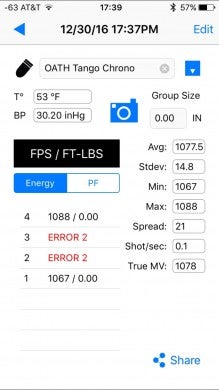
Chronograph test of the rounds. We had two errors from the chronograph (the front sensor did not register; probably due to our placement of the light bars)
Since this ammo was .45 ACP we felt that it was only appropriate to conduct the test with a 1911 (a well broken in Kimber Gold Combat to be exact; provided by Walt at BMC). Additionally we did confirm the density of each gel block prior to each shot via BB penetration.
Test 1: Bare Gel

BB Penetration of 3.3 inches.

Hard to see on the new gel but the red circle shows the entrance wound.
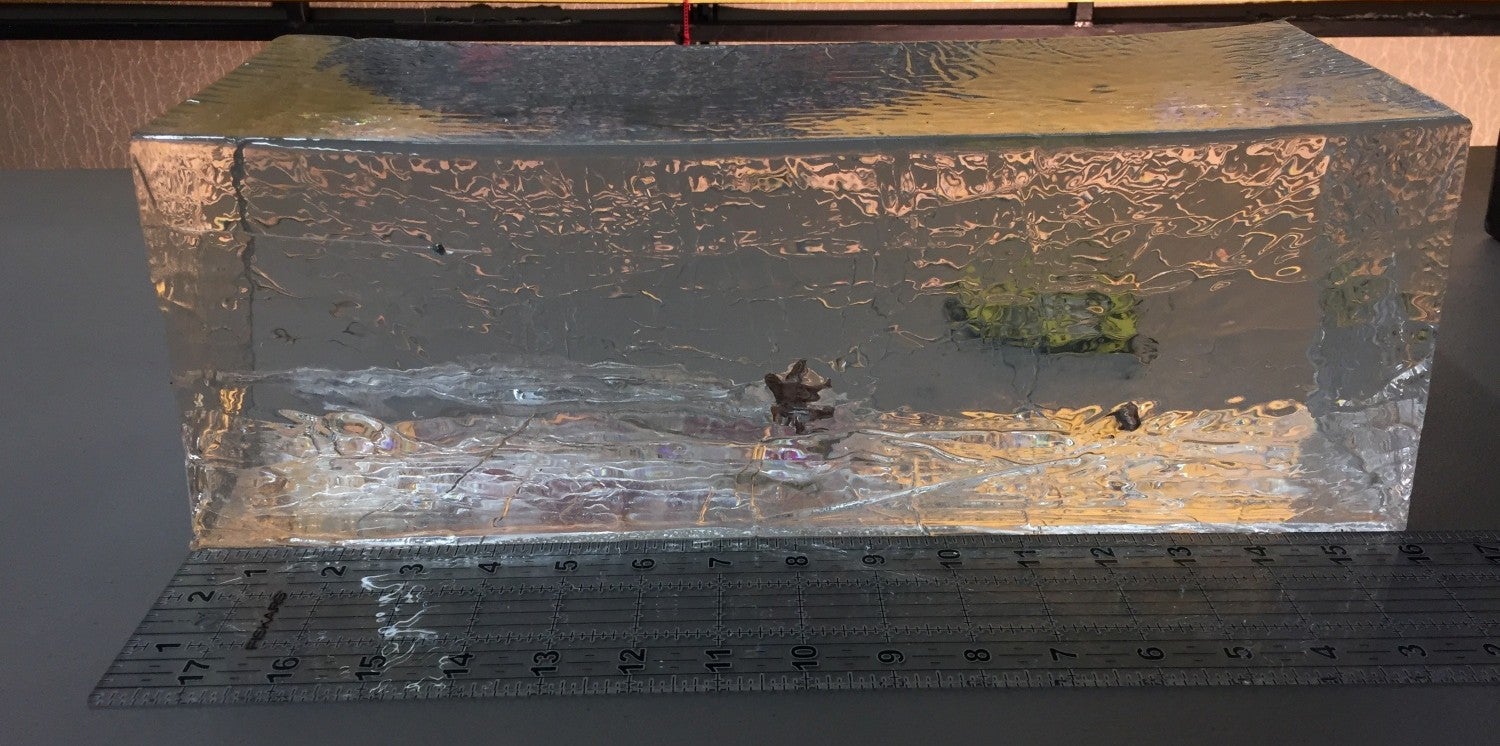
Side view of round in naked gel.
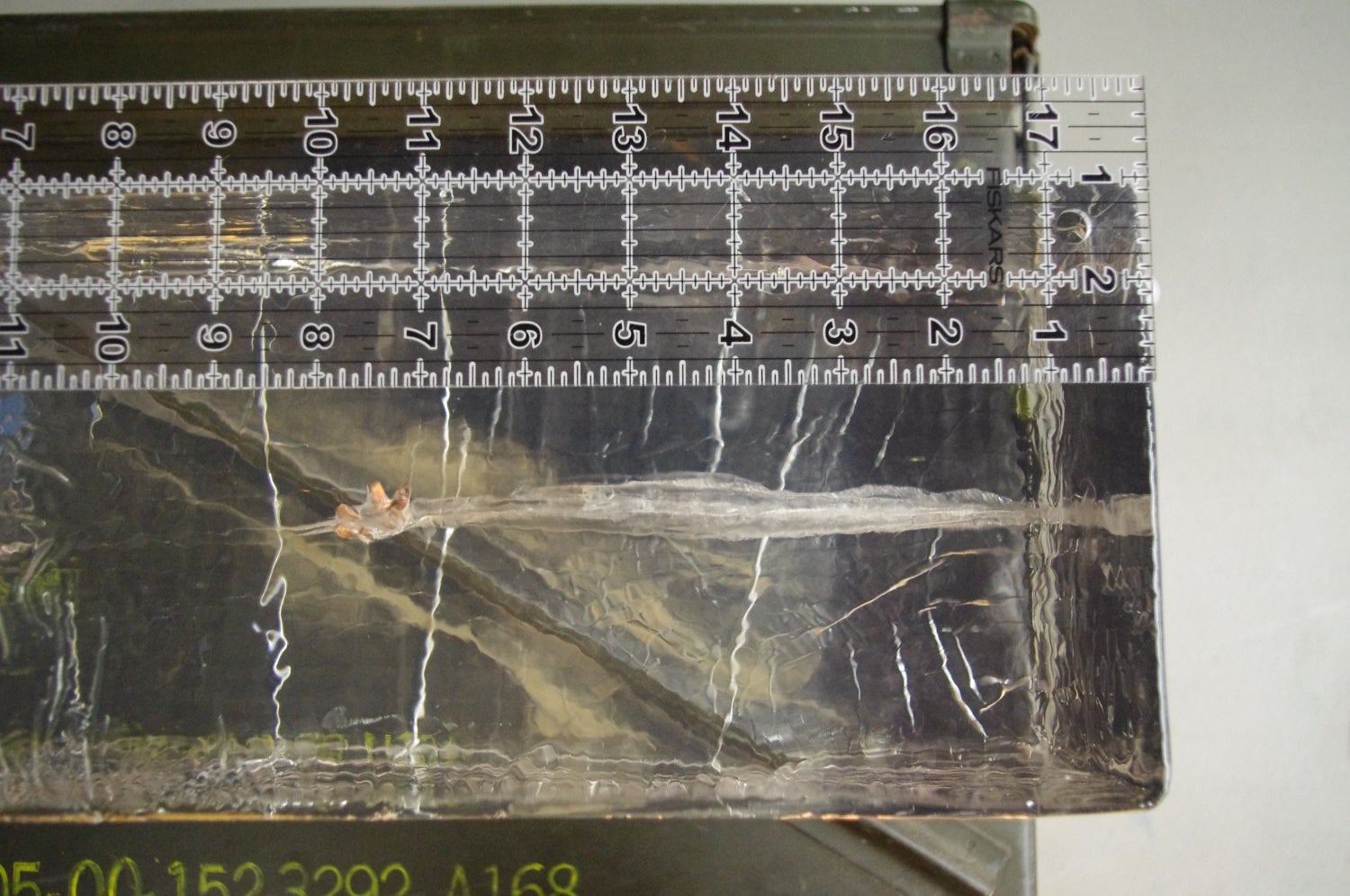
Top view in naked gel
Findings
The round behaved as advertised. The round fully expended it’s energy right at seven and a half inches. The cap travelled another five inches (leaving a very small wound channel). The petals opened most of the way and the round tumbled.
The round would not technically pass the FBI standards as a significant portion of the mass did not penetrate twelve inches.
Test 2: Heavy Clothing
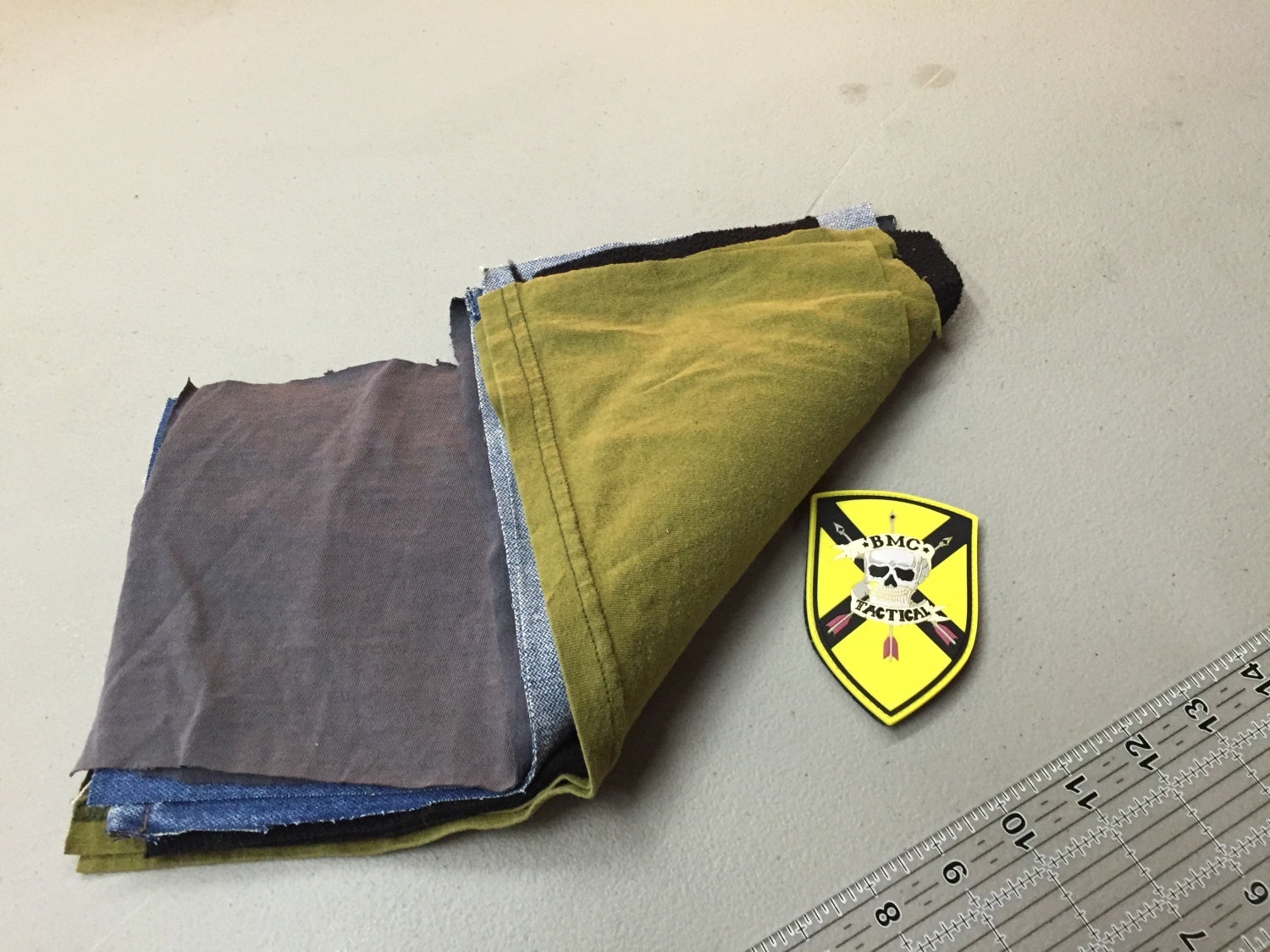
Clothing set for shoot.

BB penetration at 3.5 inches

Front entrance

Side view of shot through heavy clothing
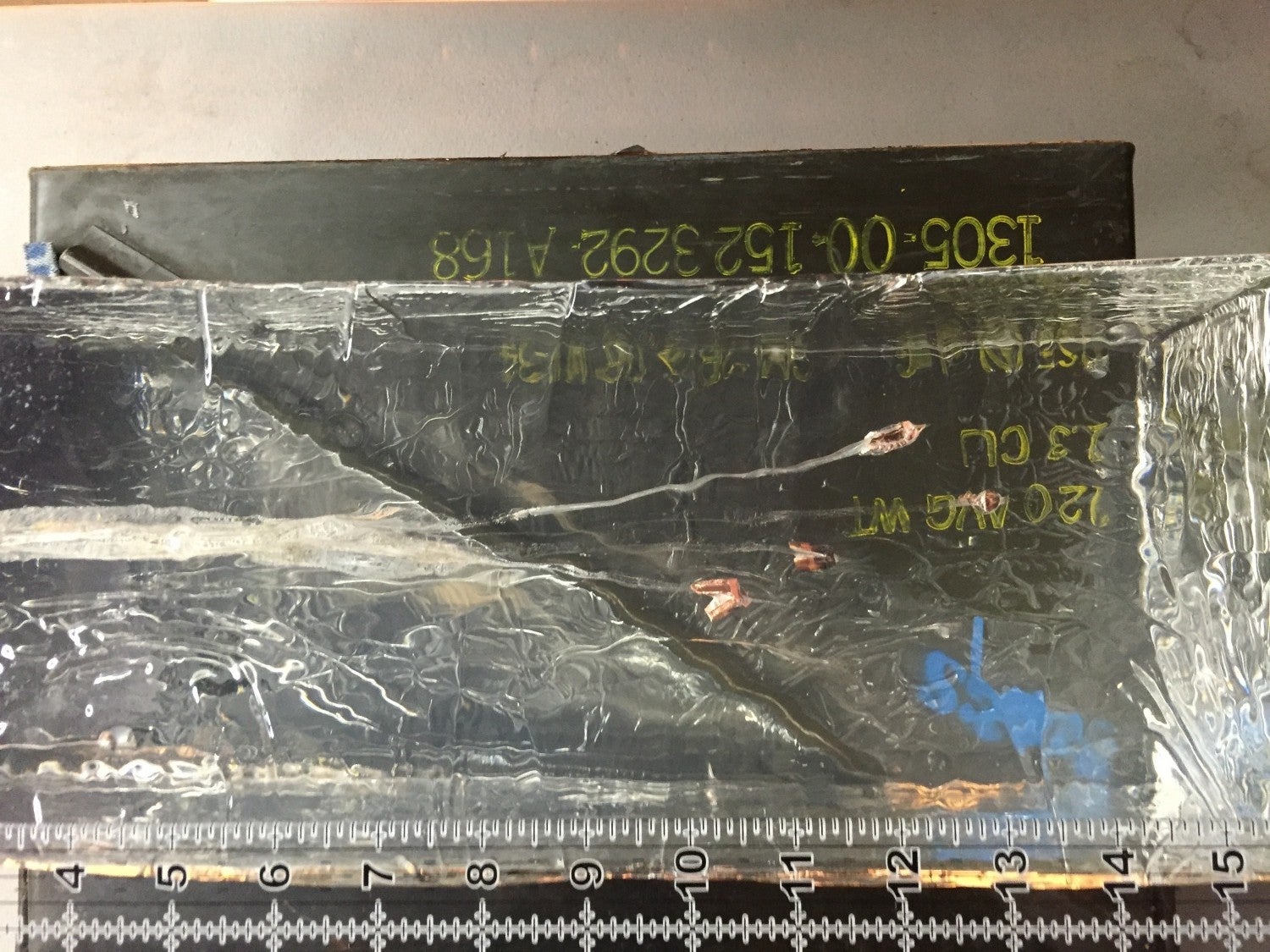
Top view of round after penetrating heavy cloth.
Findings
The round mostly behaved as advertised. The round expended most of it’s energy right at seven inches. The cap travelled another six inches (again leaving a very small wound channel). The petals, however, fragmented and sent pieces forward causing further damage to the gel.
The round would not technically pass the FBI standards as a significant portion of the mass did not penetrate twelve inches.
Test 3: Dry Wall

BB density test with just under 3.5 inches of penetration. This is one of the older gels from the original tests.

Slight possible deflection (or challenging aim)

Dry wall penetration of a little more than 12 inches.

Top view after penetrating drywall. Hard to see (though you can still make it out) through the older gel.
Findings
Paradoxically the round passed but did not behave as advertised (expending it’s energy around seven inches). It did finally pass the FBI guidelines, penetrating twelve and a half inches. The round did not flower open nor break apart, maintaining it’s shape through it’s entire path.
Test 4: Automotive Glass

Holes in the glass…
The automotive glass was conducted using Tom G’s scaffold from the previous tests we did. This time we were able to cut the windshield down into more manageable pieces. The glass was placed at a forty-five degree tilt, rotated forward by fifteen degrees, and set eighteen inches in front of the gel.

BB Test for Auto Glass at 3.4 inches of penetration.
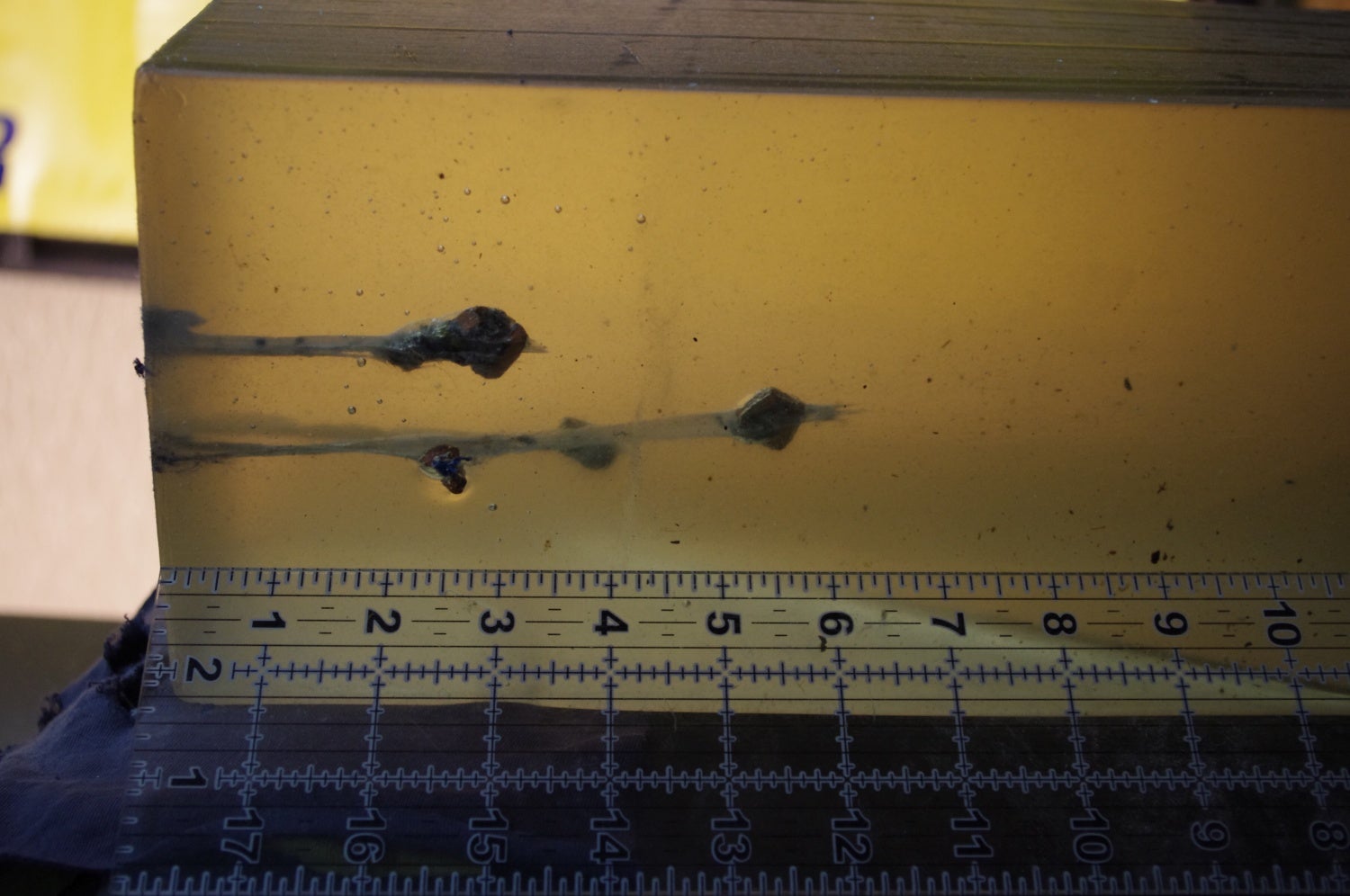
We rotated the gel on it’s side (you are looking at the bottom). Note the separate paths.

Gel rotated on it’s side (you are looking at the front and bottom). Note the three separate entrances.
Findings
This test was the most interesting of the set. The first round was aimed dead center of the gel (the aiming dot was placed on the gel itself). The first round was deflected downward nearly two and a half inches and completely missed the gel, impacting on the ammo can we had the gel staged on (the round did not penetrate the can, barely denting it).
Since we were interested in the effects against the gel, we re-conducted the test. This time we placed the aiming dot just below the upper edge of the gel. The round was still deflected down, but did make it into the gel, though it came apart before entering. The farthest traveling piece made it five and a half inches into the gel. The white misting that is visible is actually glass dust from the shot (it gets everywhere in, on, and around the gel; which is why the older gels are a bit dirtier). Also note that there was not even enough energy to displace the clothing (which we just drape; and actually fell during the other tests). I apologize for the poorer quality of this video (and for the worse gel)… 🙂
The round would not technically pass the FBI standards as a significant portion of the mass did not penetrate twelve inches.
Conclusions
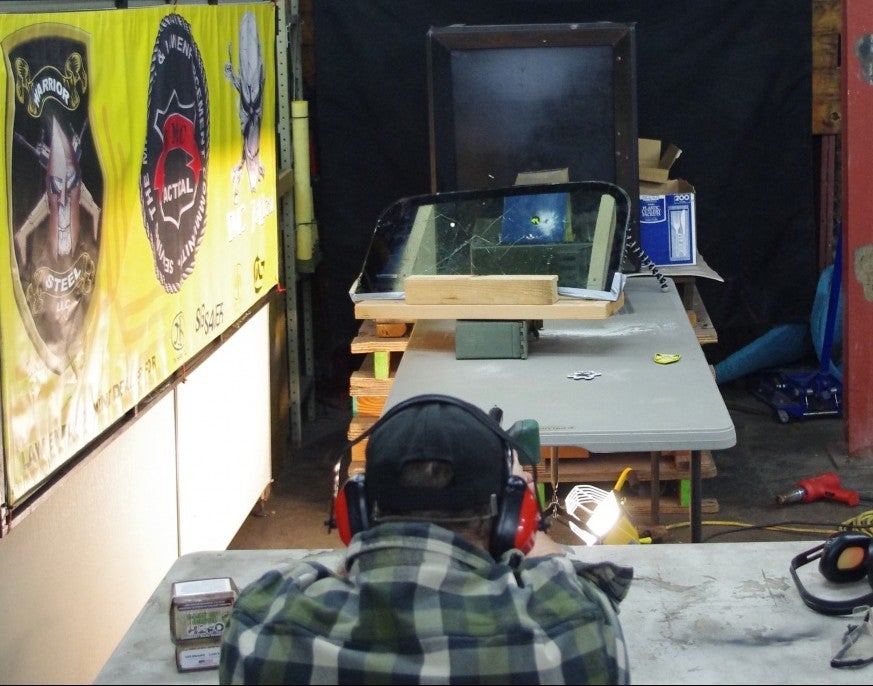
Firing position for the auto glass
Overall neither Tom Gomez nor I are a huge fan of this round. In the naked gel test and heavy clothing test it did follow the manufacturer’s data against our calibrated gels. In both tests the round expended the brunt of it’s energy by the seven inch mark which is a little short of the minimum twelve for the standard.
The drywall test showed the round penetrating deep enough, but then did not exhibit the “utility” of having the petals open (which I would assume was the main purpose of the design), and did not follow the manufacturer’s expectation.
The automotive glass showed significant downward deflection (which we did not experience with any of the 9mm rounds in the first four tests we did). It also exhibited a loss of energy, penetrating well under the FBI standards, and a little under the manufacturer’s detail.
We can debate the efficacy of the FBI standard (in the comments), but it is a pretty well defined and understood test at this point, and provides a good way to compare rounds. That said, we have not tested any other .45 ACP rounds to date with this method and so have no comparative data on the behavior of other rounds.
Credits
Thanks to Clark Armory and BMC Tactical for sponsoring and supporting this test. Clark Armory provided the Ballistic Gel from ClearBallistics and the O.A.T.H. Tango .45 ACP. If you are not looking for the ballistics profile that the Tango provides, Clark Armory has numerous other defense rounds that you may want to check out.
BMC Tactical provided an indoor lane with consistent lighting and temperature to run the test which is going to be a great benefit moving forward. Our first run of tests were in too many different locations and I think introduced some unnecessary variables.
We appreciate these two companies providing necessary materials and infrastructure for the tests.
 Your Privacy Choices
Your Privacy Choices
